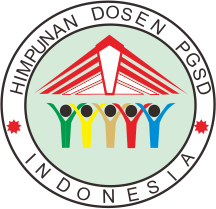STEM (SCIENCE, TECHNOLOGY, ENGINEERING, AND MATHEMATICS) APPROACHES USING THEMATIC LEARNING MEDIA TO DEVELOP CRITICAL THINKING
DOI:
https://doi.org/10.30595/dinamika.v13i1.8827Keywords:
STEM, Learning Media, Thematic, Critical ThinkingAbstract
Current learning emphasizes the integration of science and technology to face the challenges of the 21st century. Elementary school students experience difficulties in developing critical thinking skills due to the limitations of thematic learning media and appropriate learning approaches. Teachers must support the learning process following the changing times, namely integrating Science, Technology, Engineering, and Mathematics (STEM) into fun learning. The purpose of this study was to determine the effectiveness of the approach stem using thematic learning media in developing the critical thinking skills of elementary school students. This research is a quantitative research using a quasi-experimental method with one-group-pre-test-post-test, which is to see the difference between the pre-test and post-test with 1 class without a control class. Furthermore, the data obtained in this study were in the form of students 'answers to data collection instruments that measured students' critical thinking skills before and after treatment with the approach STEM using thematic learning media. Based on the results of data analysis and discussion, it is concluded that the criteria for improving students' critical thinking skills are in the moderate category, there is a difference in the mean critical thinking skills between the pre-test group, namely before and the post-test group, namely after learning with the approach STEM using thematic learning media and the post-test group, that is, after learning with the approach STEM using thematic learning media has average critical thinking skills better than the pre-test group, namely before learning with the approach STEM using thematic learning media.
Keywords: STEM, Learning Media, Thematic, Critical Thinking
References
[1] Afriana, J., Permanasari, A., & Fitriani, A. (2016). The application of Project Based Learning integrated STEM to increase science literacy students in terms of gender. Journal of Innovation in SCIENCE Education, 2(2), 202-212. https://doi.org/10.21831/jipi.v2i2.8561
[2] Anggraini, F. I., & Huzaifah, S. (2017). The implementation of STEM in SCIENCE learning in Secondary Schools. In the National Seminar on SCIENCE Education (Vol. 1, No. 1, pp. 722-731). http://conference.unsri.ac.id/index.php/semnasipa/article/view/738
[3] Cahyana, U., Kadir, A., & Gherardini, M. (2017). The relationship of Critical Thinking Skills in the Literacy Skills of Science Students of Class IV Elementary School. Elementary school: the Study of the Theory and Practice of Education, 26(1), 14-22. http://dx.doi.org/10.17977/um009v26i12017p014
[4] Hake, R. R. (2002). Relationship of Individual Student Normalized Learning Gains in Mechanics with Gender, High-School Physics, and Pretest Scores on Mathematics and Spatial Visualization. Paper presented at the Physics Education Research Conference. Boise, Idaho.
[5] Jonsons, E. B. (2002). Contextual Teaching and Learning, Make Learning Activities Fun and Meaningful. Kaifa Learning. Bandung.
[6] Kaniawati, D. S., Kaniawati, I., & Suwarma, I. R. (2015). Literacy Study The Effect of Integrating the STEM Approach in the 5E Learning Cycle on Students' Problem Solving Ability in Learning Physics. Proceedings of the National Physics Seminar. FPMIPA UPI. Bandung
[7] Kelley, T. R., & Knowles, J. G. (2016). A conceptual framework for integrated STEM education. International Journal of STEM Education, 3(1), 11. https://doi.org/10.1186/s40594-016-0046-z
[8] Mullis, I.V.S. Martin, M.O., Foy, P., & Hooper, M. (2017). TIMSS 2015 International Result in Mathematics. Association for the Evaluation of Educational Achievement (IEA) TIMSS & pearls were the International Study Center, Lynch School of Education, Boston College.
[9] Novidya, S D & Kustijono, R. (2019). The effectiveness of the learning model STEM in order to increase students ' critical thinking skills. Proceedings of the National Seminar of Physics (SNF) Unesa. Vol 3, 66-71. https://fisika.fmipa.unesa.ac.id/proceedings/index.php/snf/article/view/108
[10] Sanders, M. (2009). STEM, STEM education, STEMmania. The Technology Teacher, 68(4), 20-26. http://hdl.handle.net/10919/51616
[11] Sugiyono. (2015). Methods of Educational Research: Quantitative Approach, Qualitative, and R & D. Alfabeta. Bandung.
[12] Suyono & Hariyanto. (2017). Learning and teaching: Theory and Basic Concepts. PT. Teen Rosdakarya. Bandung.
[13] The National Research Council. (2011). Successful K-12 STEM Education: Identifying Effective Approaches in Science, Technology, Engineering, and Mathematics. Washington, D.C: The National Academies Press.
[14] The Organisation for Economic Cooperation and Development (OECD). (2018). PISA 2015 Result in Focus. (Online). Available in (pisa-2015-results-in-focus.pdf, accessed on 20 June 2019).
[15] Widowati, Asri. (2009). The development of Critical Thinking Through the Application of the Model PBL (Problem Based Learning) in Science Learning. State University of Yogyakarta. Yogyakarta.
Published
How to Cite
Issue
Section
License
Authors who publish with this journal agree to the following terms:
Authors retain copyright and grant the journal right of first publication with the work simultaneously licensed under a Creative Commons Attribution License that allows others to share the work with an acknowledgement of the work's authorship and initial publication in this journal.
Authors are able to enter into separate, additional contractual arrangements for the non-exclusive distribution of the journal's published version of the work (e.g., post it to an institutional repository or publish it in a book), with an acknowledgement of its initial publication in this journal.
Authors are permitted and encouraged to post their work online (e.g., in institutional repositories or on their website) prior to and during the submission process, as it can lead to productive exchanges, as well as earlier and greater citation of published work (See The Effect of Open Access).

Dinamika Jurnal Ilmiah Pendidikan Dasar is licensed under a Creative Commons Attribution 4.0 International License.














